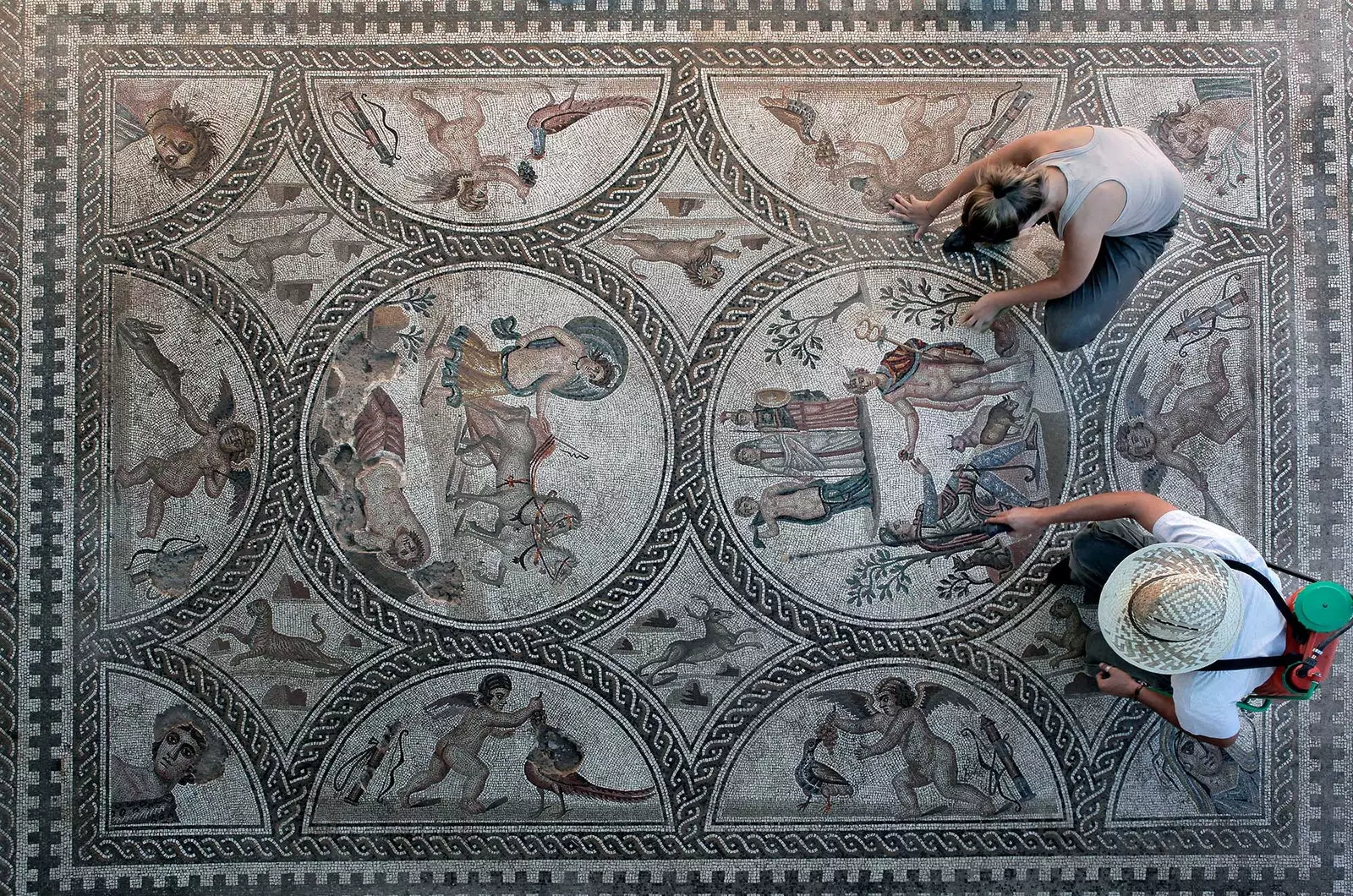
'Mosaico de los Amores' one of Cástulo's jewels
Linares is a perfect destination during this month of June for those who want to delve into the Jaen province . And we are talking about June because the temperature in this part of Spain is still pleasant, since the month of July can turn the city into a real oven. Linares, largely unknown to tourism, is a destination that keeps a lot of things to see in its streets and pays homage to the visitor with a whole free tapas food festival for lovers of good food.
LINARES, A CITY WITH HISTORY
In Linares we can observe the passage of the different civilizations that settled in the Sierra Morena region, cultures that left a mark that is still preserved today . The origin of the town is due to the name of a Roman military road that connected with the city of Cástulo, an Ibero-Roman city that developed on a settlement that already existed in the Neolithic, and which was called "Linarium".
It would be with the arrival of mining when Linares resurfaced from lethargy, turning the lead and copper mines into a perfect claim to repopulate the city in the past 19th century. With the mines came the railway and the appearance of El Centenillo in 1898 , a mining colony founded by the Hasseldem family where you can see some clearly English-style buildings.
In fact, Roman times are the most splendid in the city , spending more without pain or glory in the Middle Ages, a time in which it depended directly on the administration of Baeza until Felipe II allowed his emancipation.
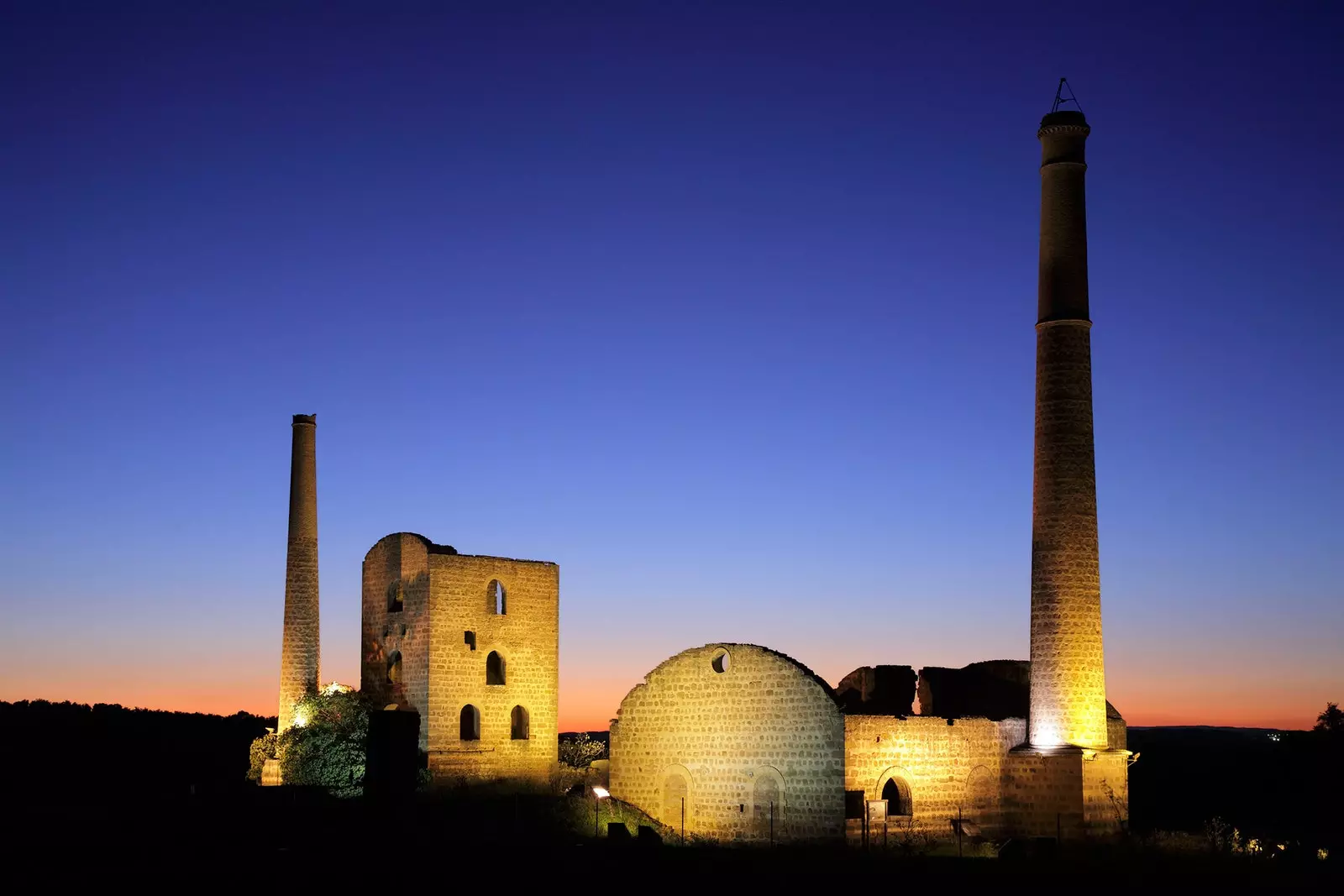
Lords Mine
This colony enjoyed its own schools, its hospital, its market and all kinds of services that made it very independent. But this would last for barely a century, as mining went into decline, closing the Cruz mine, the last one left in Linares, on May 21, 1991. Currently, the remaining mine shafts around the city can still be visited.
ROADMAP
Linares is not a big city, so in a weekend getaway you can easily see everything it has to offer. In your roadmap do not forget:
- The Hospital Museum of the Marquises of Linares. It has recently completed its first 100 years and is listed as one of the hospitals most beautiful in all of Spain . Neo-Gothic in style, it hides inside a Neo-Byzantine crypt where the remains of the Marquises lie, who expressly asked to rest there and were transferred from Madrid. The impressive mausoleum is built in marble and bronze.
- Enjoy streets and squares . Because strolling through Linares hides a surprise in every corner that turns. The old Linares is surrounded by streets from the 16th and 17th centuries that once had a great commercial activity. Very famous is the Rooster Square , where the Posada del Gallo from the 18th century was located, from which it takes its name.
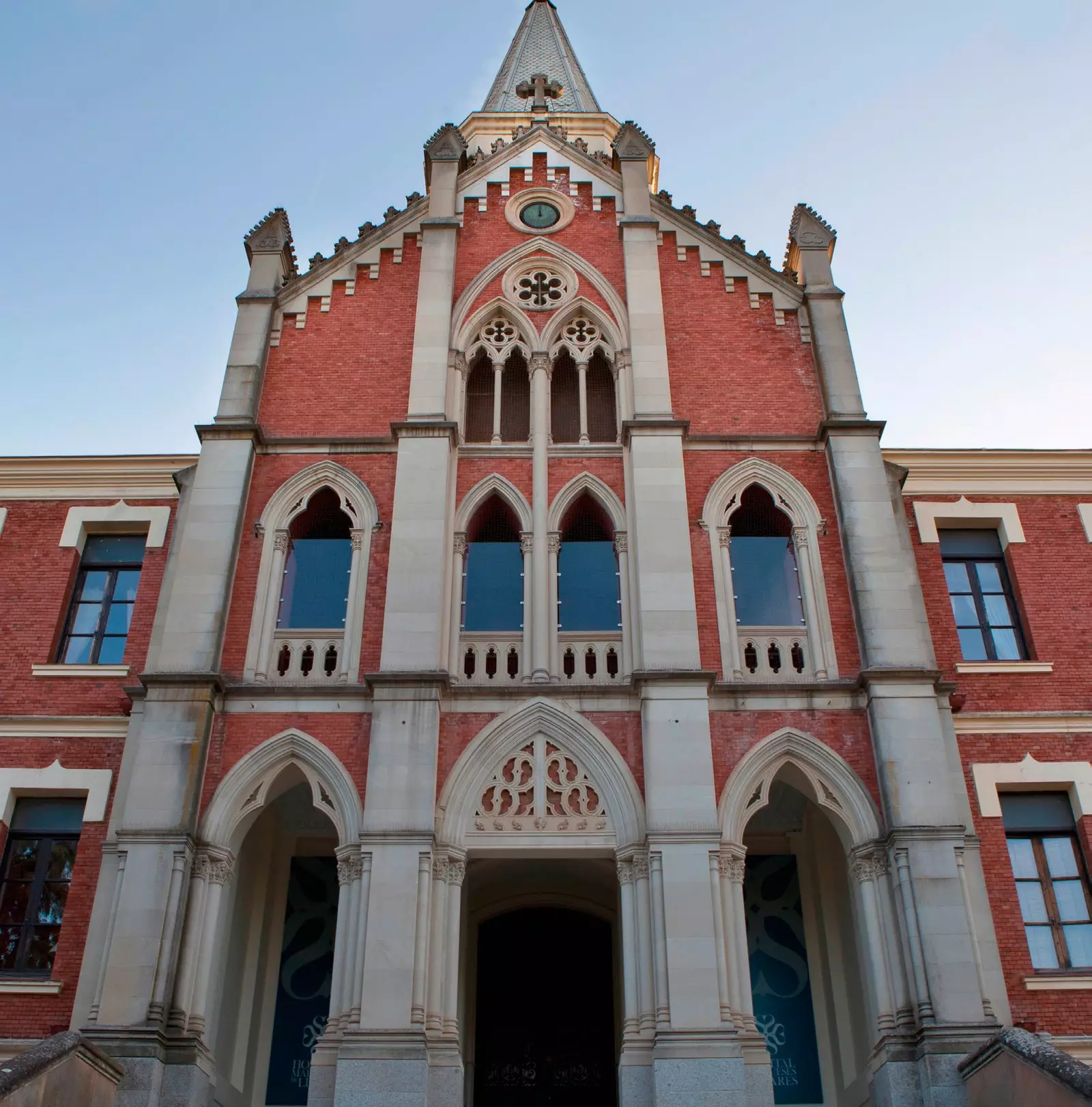
Hospital Museum of the Marquises of Linares
- Its palaces and stately homes . Walking through historic Linares is synonymous with finding a palace almost at every turn. We recommend that you do the starting point at the ** Pósito , an Interpretation Museum in the city of Linares ** which is also the headquarters of the Tourist Office. There they will explain to you how to do the route on foot through the old Linares of the palaces and stately homes. The Pajares house from the 18th century where the Revolutionary Junta of 1868 was promoted, the Zambrana palace from the 16th century, the Orozco palace or the Torreón house, current headquarters of the city's Archaeological Museum.
- Castulo . You cannot leave Linares without visiting the ruins of the ancient Ibero-Roman city de Cástulo, 6 kilometers from the city. The Archaeological Ensemble of Cástulo offers the traveler a trip to the past , to a city that had its own thermal baths, its port, its necropolis and a whole host of infrastructures that made it a prosperous city with a lot of movement. Do not forget to take a photo of the mosaic of loves, from the 4th century, in a very good state of conservation.
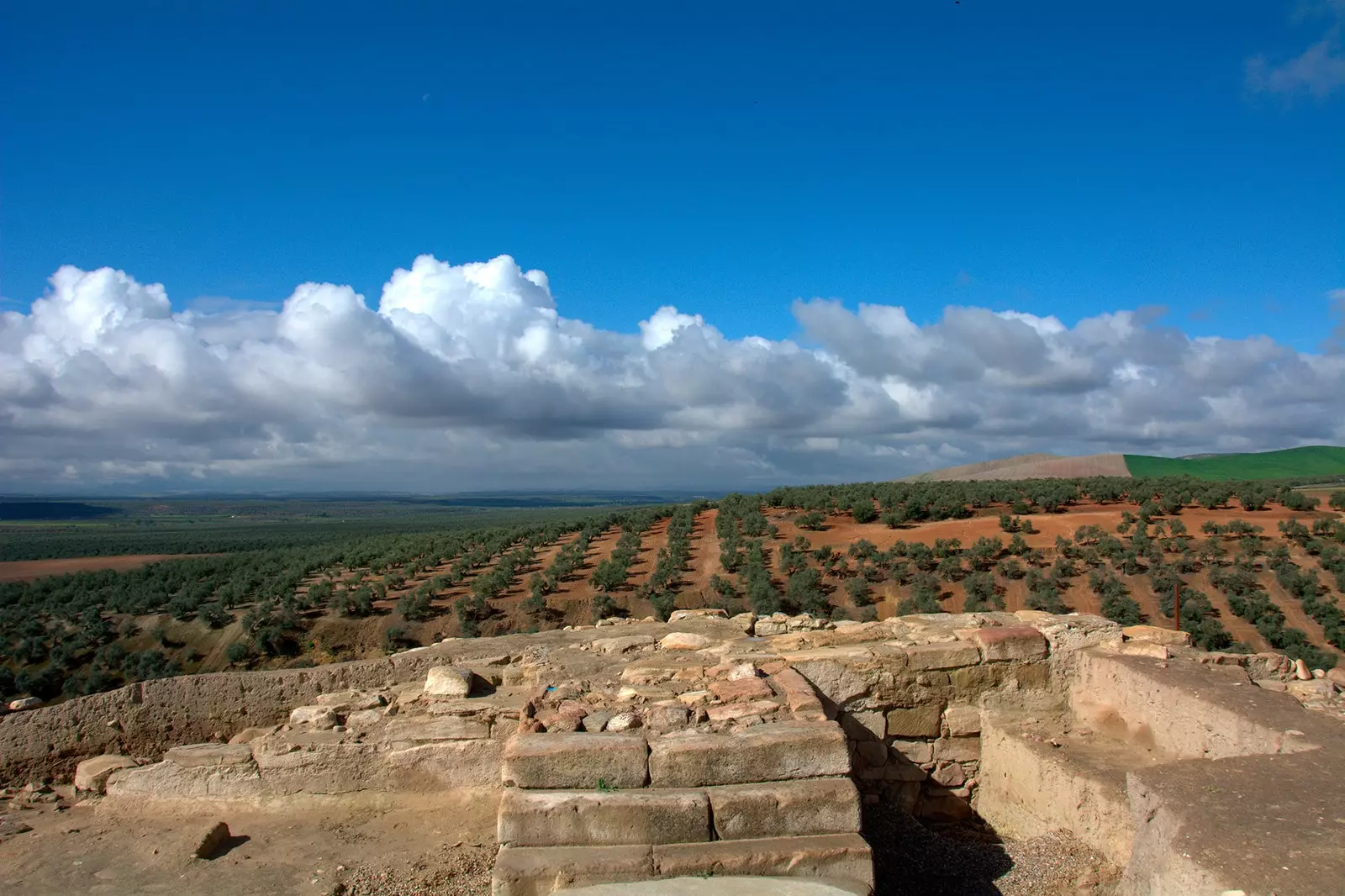
Ruins 5km from the city of Linares
We cannot forget that we are in olive oil land , an ingredient that is very prominent in almost all their dishes. At the table in Linares can not miss the olives (no olives, please) seasoned, which there accompany almost everything, almost more than the bread itself.
TO EAT!
If there is something that really puts Linares in the arena is that the tapas there plays in the first division. And it is possible to say that Linares is one of those gastronomic cities in which with three or four tapas more than one can feel satisfied and think that "he has already eaten".
Now with the heat it becomes very present pipirrana, a fresh salad very typical of this land which is made up of tomato, pepper, cucumber and onion basically. Also migas, gazpacho and white garlic; porridge or potatoes with cod. And of course, rags, a dish that is not only eaten in Úbeda or Baeza, for the record.
When choosing tapas bars, Linares is a real party . You have to stop at The Carbonery (Zabala, 9), with reasonable prices and generous portions, where each thread has the name of a mineral, making a nod to the city's mining tradition.
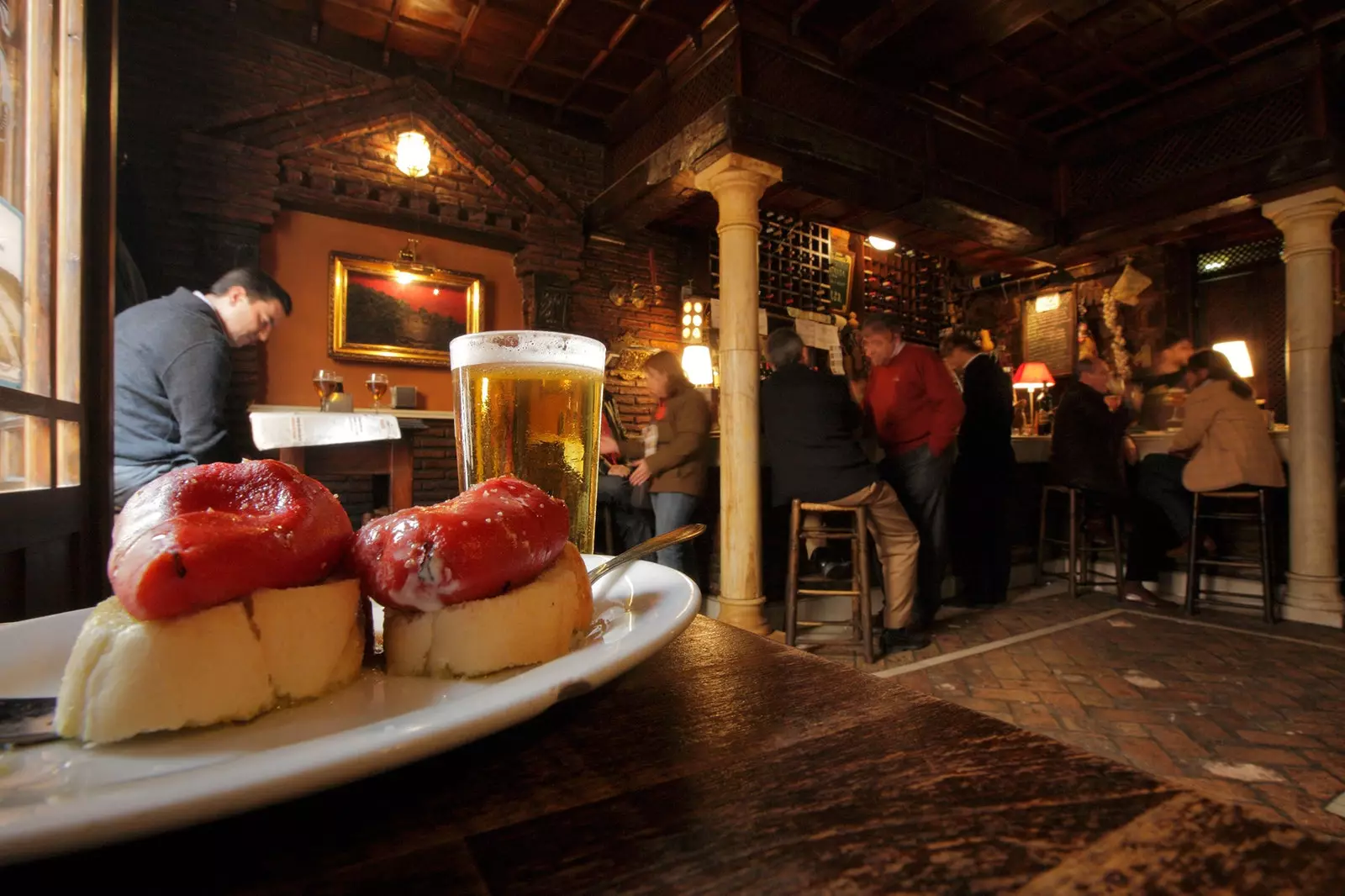
Linares, a gastronomic city where one can feel more than satisfied
Another important stop is at the galley , in a little street perpendicular to the Paseo Marqueses de Linares, where you can get down to business with their tapas of fried snouts, a true delight. The Mountain Bar (Cervantes, 8) is an example of the typical bar where you start with a beer and end up at the table eating as if there were no tomorrow.
Another great among greats is the lizard (Pérez Galdós, 27), a typical bullfight where Manolete is said to stop and where the tortilla and fried nose are protagonists . And of course they can not miss "The Hams" , the Café Mañas that is located at the entrance to Linares (Avda. España 83) where with each drink a tapa is provided that can range from a chorizo or blood sausage flea to a mixed sandwich or a mini anchovy sandwich. We take this opportunity to say that he is our favorite.
If your thing is to sit at the table, Linares has also put the batteries in as far as table and tablecloth restaurants are concerned. Cinnamon Stick (Rep. Argentina, 12) can answer you with good typical Andalusian food with certain nods to fusion as a tasting menu for around 45 euros. Another very good option is The senses (Doctor, 13) , a temple of signature cuisine built on a hundred-year-old house that shows that in Linares they are also willing to compete gastronomically speaking.
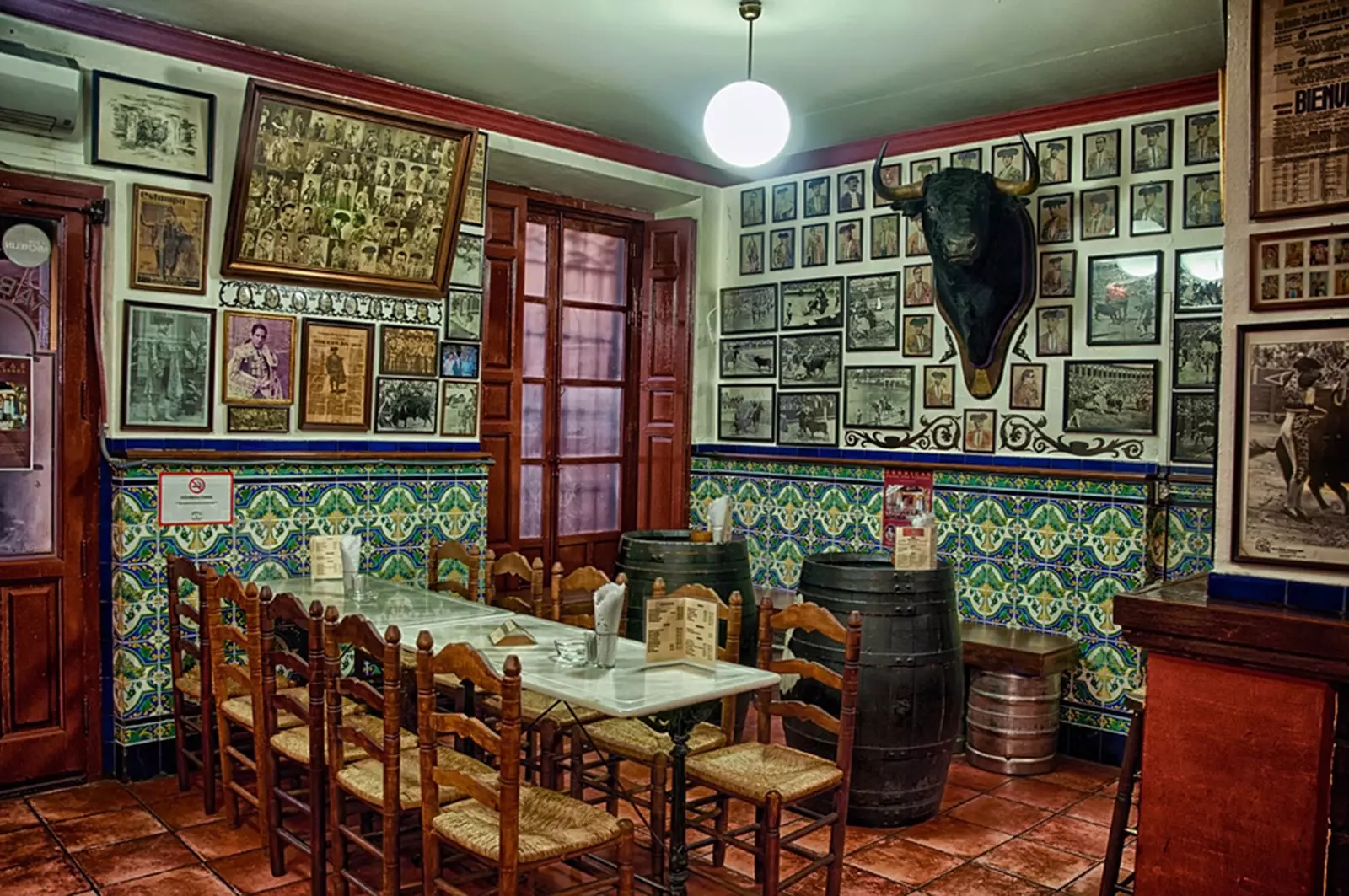
Typical bullfighting 'lizard' where Manolete is said to have stopped
BONUS TRACK FOR THE CURIOUS
- The bullring of Linares It is a legendary square. It was attended by great personalities such as Ernest Hemingway, and a legend of bullfighting died there: Manolete. In fact, he went to Hospital of the Marqueses of Linares where the mortally wounded bullfighter was transferred but nothing could be done for his life.
- Linares It is the land that gave birth to famous singer Raphael . In fact, the artist has his own museum in the town where, in addition to recognizing his extensive professional career, a door is opened to learn a little more about this great musician.
- If you order a partridge tapa, you may not find what you expected . There it is said.
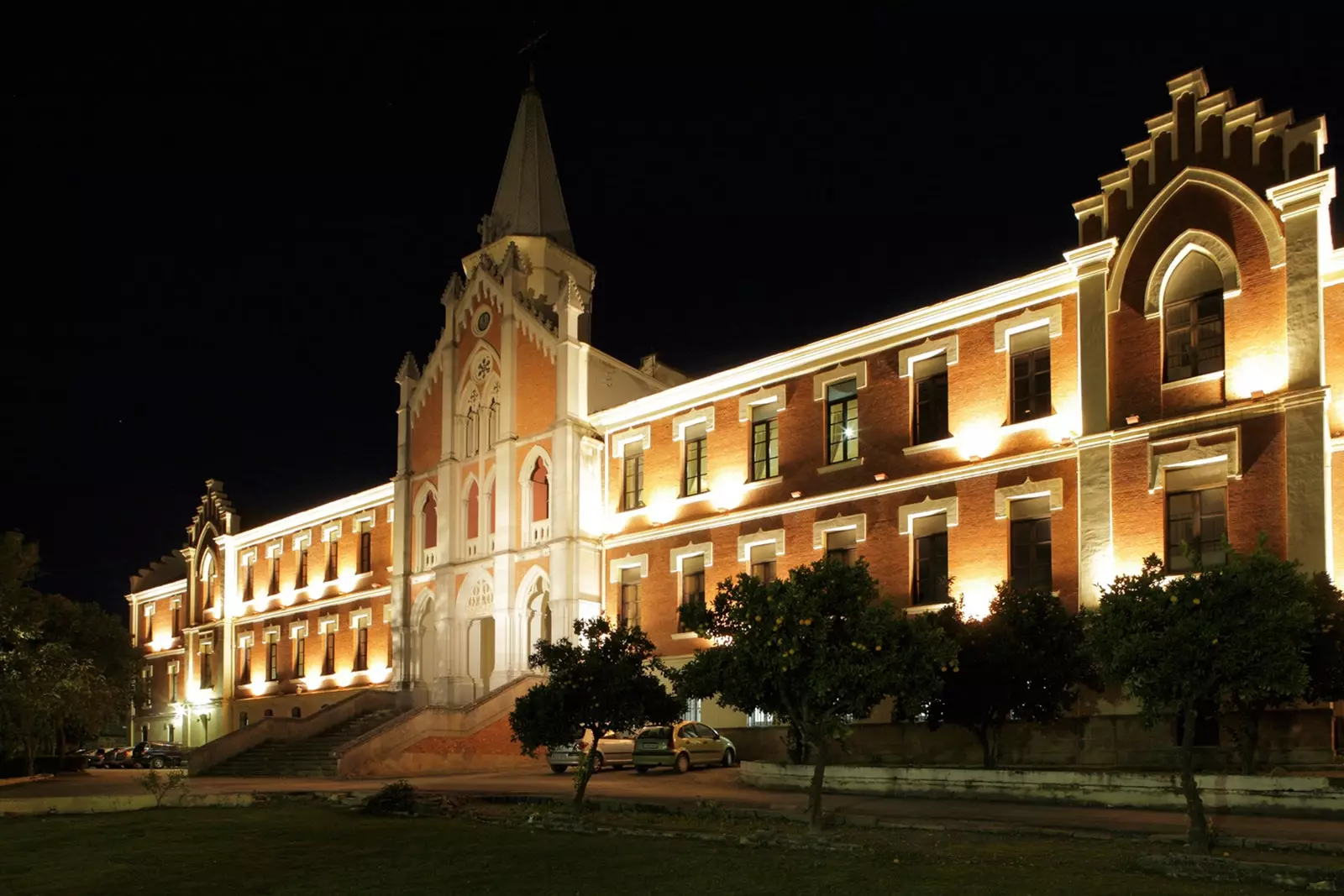
'Linares': from the Romans to tapas
